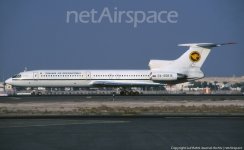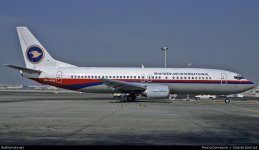I believe this is now more a matter of when and not if it will actually occur.
The Indians could be in trouble.
IAF 2023:
5 Sqd Jaguar - 130 aircraft
3 Sqd MiG-21 - 54 aircraft
3 Sqd Mirage 2000 - 45 aircraft
3 Sqd MiG-29 - 65 aircraft
2 Sqd Rafale - 36 aircraft
12 Sqd Su-30MKI - 248 aircraft
2 Sqd Tejas - 32 aircraft
The IAF had 31 active squadrons, but of the remaining 4 squadrons that will be eliminated from the MiG-21 by 2025, one of them has already been deactivated, with the composition of the IAF standing at 30 squadrons with 556 active aircraft, which means that the IAF has 12 squadrons less than it should, around 216 aircraft in deficit to face +400 PAF fighters divided into 20 squadrons and 200 PLAAF fighters from China's Western Command(WTC), mentioning that the PAF is updating its air force for the J-10CE and the JF-17 Block III(and now the 5th generation J-31

), in addition, it still plans to increase another 4 or 5 squadrons, which would put another 80-100 fighters for the IAF to face , the current posture of the IAF is very weak in maintaining a structure of 42 squadrons with somewhere around 756 aircraft to go head to head with the combined fleet of around 655-700 aircraft of the PAF and PLAAF.
Either India needs to urgently resolve the AMCA, which will only be available in 2035, or move to the F-35 or return to the Su-57. There's no way. By 2035, what will be the PAF/PLAAF's stance in theater?
Just to mention, the PLAAF's 200 fighters can still contain 5th generation J-20s, combined with a fleet of PAF J-31s, the IAF will be in trouble in the early 2030s.
It is quite possible that the J-20 fleet in the PLAAF will reach 1000 fighters by +2030, I believe that around 200 units could be under the command of the WTC, combined with a small fleet of 30-100 J-31s in the PAF.
IAF 2032-2035
5 Esqd Jaguar - 130 aircraft (eliminated by 2032)
3 Esqd MiG-21 - 54 aircraft (eliminated by 2025)
3 Esqd Mirage 2000 - 45 aircraft (eliminated by 2035)
3 Esqd MiG-29 - 65 aircraft (eliminated by 2035)
Therefore, based on orders already agreed and/or rumors of orders + some baseless speculation, the IAF in 2035 would be:
2 Sqd Rafale - 36 aircraft
12-14 Sqd Su-30MKI - 248-270 aircraft
2 Sqd Tejas Mk 1 - 32 aircraft
5 Sqd Tejas Mk 1A - 83 aircraft
= 21-23 Sqd - 399-421 aircraft
Increase through MMRCA 2.0, acquiring 114 aircraft, representing around 7 squadrons. (contract almost closing)
Also mentioned is a probable extra order for another 3 Sqd Tejas Mk 1A, representing another 54 aircraft. (recent rumors)
Order of Tejas Mk 2, probably somewhere around 5 squadrons, totaling 90 aircraft. (speculation)
= 15 Sqd - 258 aircraft
In other words, by 2035, the IAF would have between 36 and 38 squadrons totaling between 657 and 679 aircraft.
NONE OF THE 5th GENERATION AIRCRAFT.
If you were an IAF officer, you would already be working hard trying to convert this inferiority that will only intensify until 2035, at the earliest.











